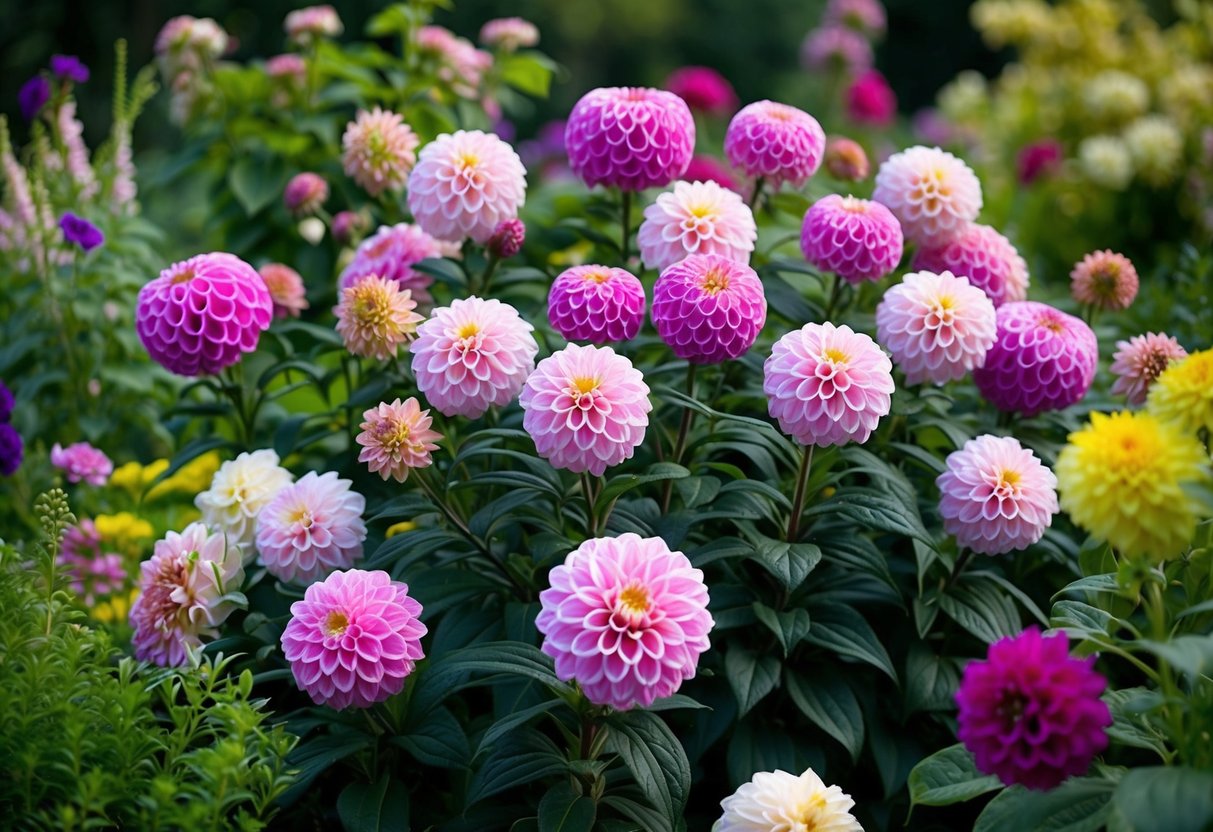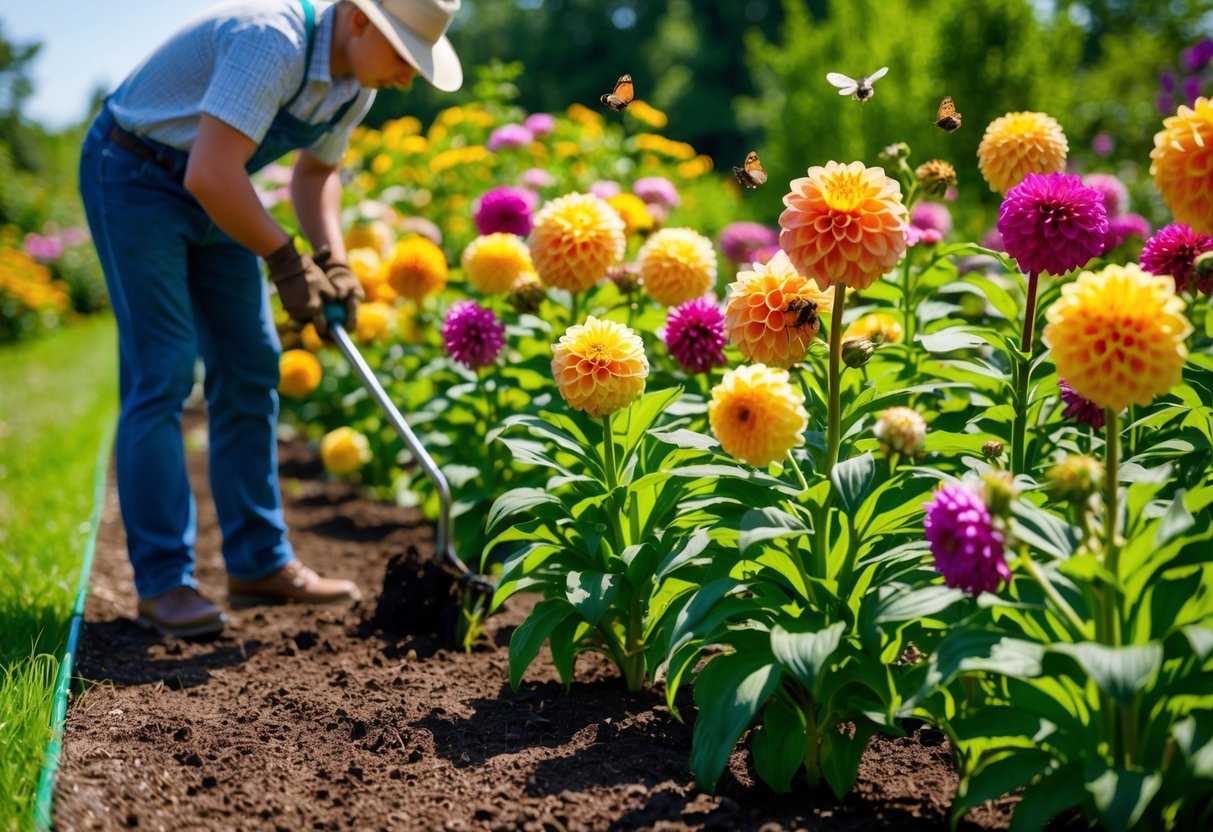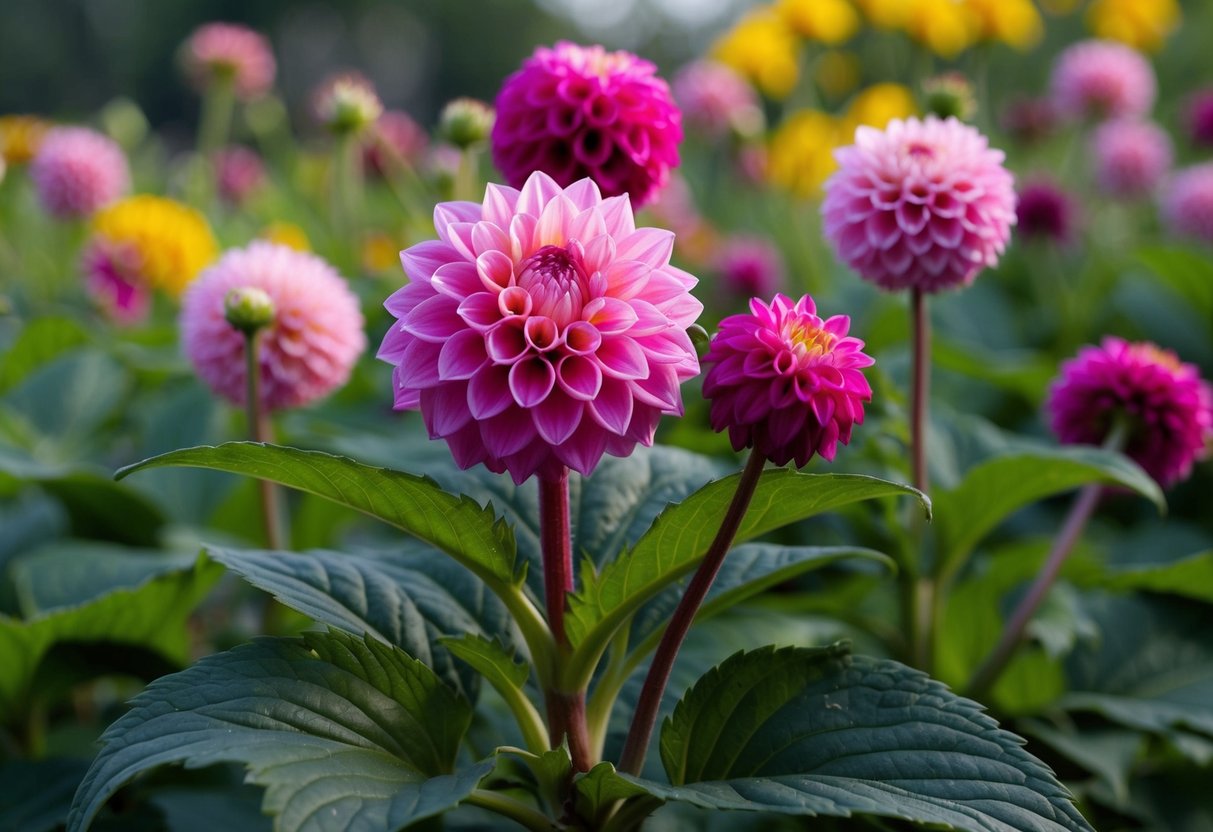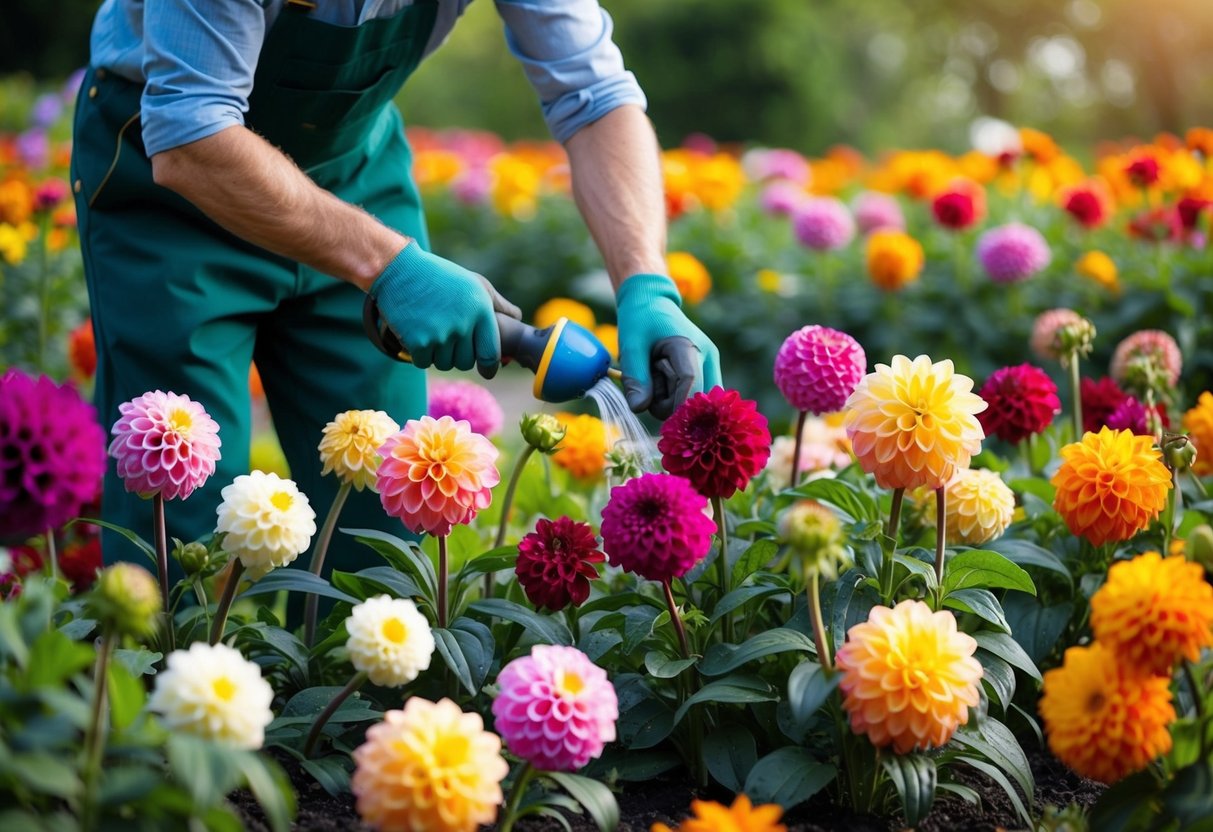Are Dahlias Perennials? A Guide to Their Lifespan
If you love colorful and vibrant gardens, you might be wondering if dahlias are the right choice for you. These beautiful flowers can add a splash of color with their bold blooms. Dahlias are technically perennials, meaning they can come back each year. However, this depends on your climate.

In warm climates like those in USDA hardiness zones 8 and above, dahlias can indeed survive the winter and return in the spring. They act as true perennials in these areas. In colder regions, though, they are often treated as annuals because their roots can’t survive freezing temperatures.
Whether you see these plants as perennials or annuals, their care needs during winter vary based on where you live. Knowing this distinction helps you enjoy their beauty year after year.
Understanding Dahlias

Dahlias are colorful, diverse flowers that come from the same family as daisies and sunflowers. These plants are known for their unique characteristics and a wide range of varieties that offer something for every gardener.
Dahlia Description and Classification
Dahlias belong to the Asteraceae family, which also includes daisies, chrysanthemums, and sunflowers. They are known for their striking flowers, which can vary greatly in size and color. Typically, dahlia plants grow from tubers, which are thick, fleshy roots that store nutrients. When planting, these tubers play a crucial role in the growth of dahlia flowers. They thrive in well-drained soil and do best with full sun exposure.
These plants can range from small, border-sized flowers to large, dinner plate-sized blooms. Their classification depends on several factors, including the size and shape of the flowers. The unique petal arrangements make dahlias a favorite among gardeners who value decorative diversity.
Varieties and Characteristics
There are thousands of dahlia varieties, each with its unique charm. Some popular varieties are the cactus, ball, and pompon types. These varieties vary not only in size but also in shape and color. The cactus type has pointed petals, while the ball variety features a rounded shape. Pompons are small and perfectly spherical.
Dahlias are known for their vibrant colors, including shades of red, pink, yellow, and white. When choosing a variety, consider your climate. Some dahlias are better suited to warmer areas, while others can handle cooler temperatures with extra care. Learning about these characteristics helps you choose the right dahlias for your garden, ensuring beautiful blooms throughout the growing season.
Planting and Growing Dahlias

Growing dahlias in your garden provides beautiful summer blooms with a variety of colors and shapes. To ensure they thrive, focus on choosing the right spot, preparing the soil properly, and maintaining consistent care.
Selecting the Right Site
Dahlias need an area with plenty of sunlight for optimal growth. Aim for a spot in your garden that receives at least 6 hours of full sun per day. This will support the lush dahlia foliage and vibrant blooms.
Spacing is crucial when planting dahlias. Each plant should have about 18 to 24 inches between them. This prevents overcrowding and allows for proper air circulation, which is essential to keep the plants healthy and reduce the risk of disease.
Soil Preparation and Planting
Before planting dahlias, focus on preparing the soil. They thrive in well-drained soil rich in organic matter. You can achieve this by adding a good amount of compost to your planting beds. Compost not only enriches the soil but also improves drainage.
When planting dahlias, dig a hole a few inches deep and place the tuber horizontally. Cover it lightly with soil. Avoid heavy watering right after planting. Wet soil can rot the tubers, so wait until you see shoots before watering deeply.
Caring for Dahlia Plants
Once planted, provide consistent care to maintain strong and healthy dahlias. Regular watering is key, especially in the early morning to avoid wet foliage at night. This helps prevent fungal diseases.
As your dahlias grow, pinch off the tips of early growth to encourage bushier plants. Support taller varieties with stakes to prevent them from falling over once they bloom. Keep an eye out for pests and remove any damaged leaves to maintain healthy foliage.
The Dahlia Lifecycle

Dahlias are fascinating due to their unusual lifecycle, where they can behave as either perennials or annuals, depending on climate. Understanding how dahlias grow and rest can help you enjoy their beauty year after year.
From Tubers to Blooms
Dahlias begin their journey as tubers, which store energy for new growth. You plant these tubers in late spring once the soil temperature is between 55 to 60 degrees Fahrenheit. At this stage, ensure the danger of frost has passed.
Roots and shoots begin to grow from the tubers as they transition from dormancy to active growth. Soon after, you will witness leafy growth above ground. Then, the blooming period arrives, usually from mid-summer to fall, rewarding you with a colorful display. Dahlias are mostly tender perennials in zones 8-10, meaning they can return every year if care is taken. In colder regions, however, you might treat them as annuals unless you can protect the tubers.
Period of Dormancy
After their vibrant display, dahlias enter a dormancy phase. As frost appears, foliage dies back, signaling it’s time to prepare them for the next growing season. In colder climates, you will need to dig up the dahlia tubers once the foliage has died off.
Trim the stems to about 2-3 inches and carefully dig around the tubers to avoid breaking them. Store them in a cool, dry place over winter to protect them. This resting period ensures that the tubers are ready for replanting once spring arrives again, allowing the lifecycle to continue.
In warmer zones, you may leave tubers in-ground, needing minimal protection, as they naturally survive the milder winter. This flexibility makes dahlias a joy to grow in diverse regions.
Garden Maintenance and Care

Taking care of your dahlias involves more than just watering. You’ll need to pay attention to routine tasks like deadheading and pruning, and be ready to manage pests and diseases to keep your flowers healthy and vibrant.
Routine Dahlia Care
To keep your dahlias thriving, make sure they receive plenty of sunlight. Regularly check the soil; it should be moist but not soggy. Adding a layer of mulch can help retain moisture and control weeds.
Deadheading, or removing spent blooms, is crucial. This encourages new flowers to grow and extends the blooming season. Pruning tall varieties might need some support with stakes, while smaller types benefit from thinning to improve air circulation. This routine care enhances your garden’s appearance and keeps plants healthy.
Pest and Disease Management
Dahlias are vulnerable to pests like aphids and slugs. Inspect your plants regularly and use organic insecticides if needed. Natural remedies such as neem oil can also be effective.
Keeping the area clean reduces disease risk. Remove fallen leaves and debris around the plants. If you notice any signs of disease (like powdery mildew), act quickly by trimming affected areas. Practicing good hygiene and using clean gardening tools also helps prevent spreading pests and diseases.
Overwintering and Hardiness

Dahlias are known for their vibrant blooms. If you live in regions with colder winters, it’s essential to protect your dahlias. Understanding the climate and taking steps to overwinter the tubers can ensure your plants thrive year after year.
Protecting Dahlias in Colder Climates
If you live in USDA hardiness zones 7 and below, it’s necessary to protect your dahlias from cold winter temperatures. Dahlias are not hardy in these areas, so extra care is needed. After the first frost, which usually marks the end of the growing season, cut back the foliage and dig up the tubers. This is an important step to prevent them from freezing completely.
In climate zones with frost-free winters, such as zones 8-10, dahlias may grow as perennials, but they still benefit from some winter protection. To be safe, cover the base of the plants with mulch, which helps insulate the roots. This simple step can protect them from unexpected cold snaps and ensures they return strong in the spring.
Storing Tubers for the Winter
Proper storage of dahlia tubers is crucial to successfully overwinter dahlias. Begin by gently digging up the tubers after the foliage dies back. Clean the tubers by carefully removing any excess soil, being mindful not to damage the thin skin. This prevents them from rotting during storage.
Find a dark environment with temperatures around 40-50°F for winter storage. A basement or other cool, dark place often works well. Place the tubers in a box or bag with slightly damp peat moss or sand to maintain moderate humidity. This keeps them from drying out. Check the tubers occasionally for any signs of decay, and be sure to discard any that are unhealthy.







